Horseytalk.net Special Interview
Bridle Fitting Advice
I have just bought a new horse and need to buy a new bridle, what should I look for in a new bridle and how do I ensure it is fitted correctly and will be comfortable for the horse?
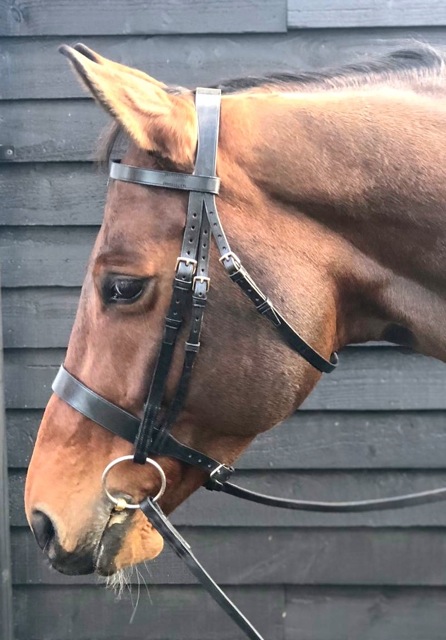
Says The Society of Master Saddlers:
First of all you need to think about the purpose of the bridle and what you are going to be doing with your horse. A well selected, correctly fitting bridle can enhance the best points of a horse’s head and help disguise the less fortunate. In showing this can be used to great advantage. A horse that is comfortable in his bridle will also be able to move more freely.
Remember horses come in many different shapes and sizes and every breed has individual attributes that make them suited to a specific discipline, interest or showing class.
You can go to your local Saddlery shop and select the finest, well designed bridle using the finest materials and crafting. It could be just what you need and show off your horse but only if it fits correctly… and quite simply it can be a useless tool if it does not fit!
If you are taking part in any specialist disciplines or classes make sure you know the rules and know what is and is not allowed to be worn. This could be a costly mistake if you are planning to compete.
The simplest and most common bridle is the snaffle but fitting a bridle has the same principles whatever the style.
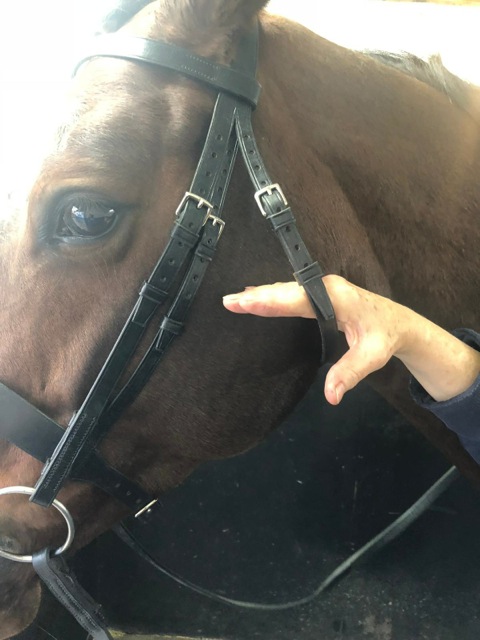
When fitting a bridle on a horse for the first time hold the bridle at the side of the horse’s head to get a rough idea of how big the head is. Adjust the fastenings as necessary, if you don’t do this you may struggle to get the headpiece over the horse’s head if it is too small. Straps can be left out of their keepers and runners to make adjusting quick and easy.
Once the bridle is in place, do up the buckles, starting from the top and working down.
The browband must not be so tight that it pinches the back of the ears or pulls the bridle forward. If fitted too high it will rub around the base of the ears causing discomfort, which may cause head shaking. The bridle should be loose enough to not cause the horse discomfort but secure enough not to slip off.
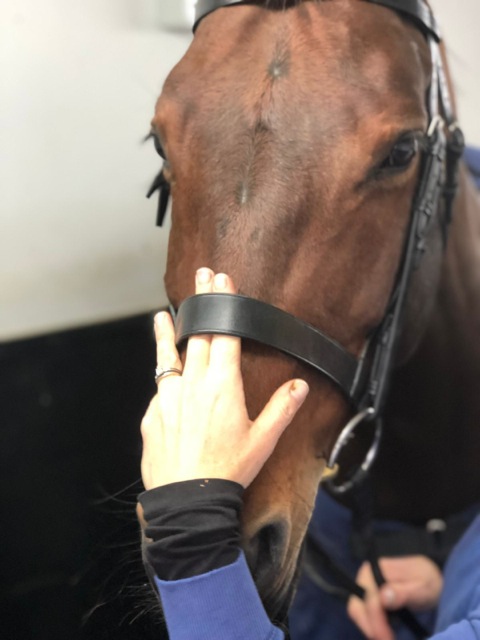
A correctly fitted bit should hang so that it sits in the inter orbital space, and is not in contact with any of the teeth, the height and fit of the bit depends very much on the horse’s mouth conformation – it may have a short mouth, low palate, thick tongue etc. We used to say that there should be one or two wrinkles at the corners of the mouth, but a much better test is that it should look comfortable, and be high enough in the mouth that the cheek pieces do not sag away from the face when the contact is taken up, but not so high that it appears to make the horse smile. The width of the bit is important too. It should not be pinching at the sides or be loose enough that it moves from side to side across the mouth. The cheek pieces can easily be adjusted if necessary to gain the correct position.
The cheek pieces of the bridle must not be fastened on the top hole as this can interfere with the sensitive jaw joint and cause great discomfort, if they do then you need to have them adjusted by a craft saddler.
The throat lash must not restrict the horse’s breathing. When fastening it remember that some horses become very thick through the jaw in collected paces. To measure for a good fit place three fingers sideways between the throat lash and underneath the horse’s chin.
The cavesson noseband should lie about two fingers’ breadth below the prominent cheekbones and just above the rings of the bit to avoid pinching or chafing.
Check that the noseband is level before fastening. All nosebands should be loose enough to fit two fingers side by side under the front of the noseband when fastened.
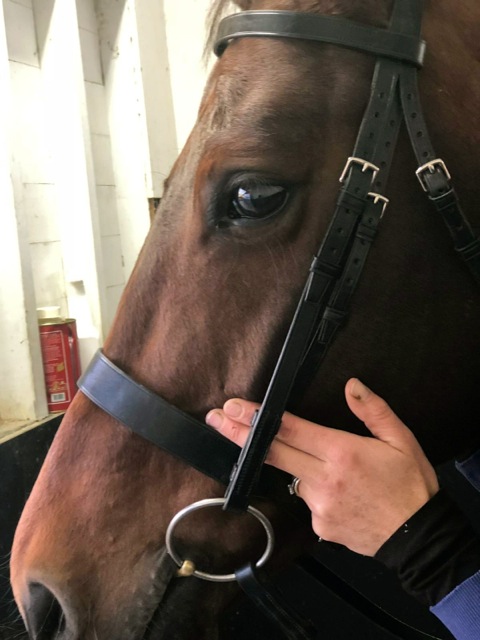
The leather of a bridle should be firm but pliable with no sharp or rough edges. If a bridle is very cheap it has either been made from poor quality materials or by using modern day slave labour, however, a high price does not guarantee a great product. If in doubt ask a craft saddler for advice on the quality of a bridle.
Bespoke bridles are a good option. Made by craft bridle-maker these bridles are perfectly made to measure your horse and fitted. It certainly takes the hassle out of buying and fitting one and can be extremely good value for money and a worthwhile investment. The bridle-maker will come out to measure up your horse, and if this is not possible due to distances involved they may give clear measuring instructions for you to do it yourself and feedback the measurements. Bridle fitters can help with choosing the correct size of bit and many are also bitting specialists who will carry a selection of bits for you to try. Nowadays many bridle fitters carry a selection of different makes or styles of bridle that you can try before buying, similar to the way saddle fitters do.
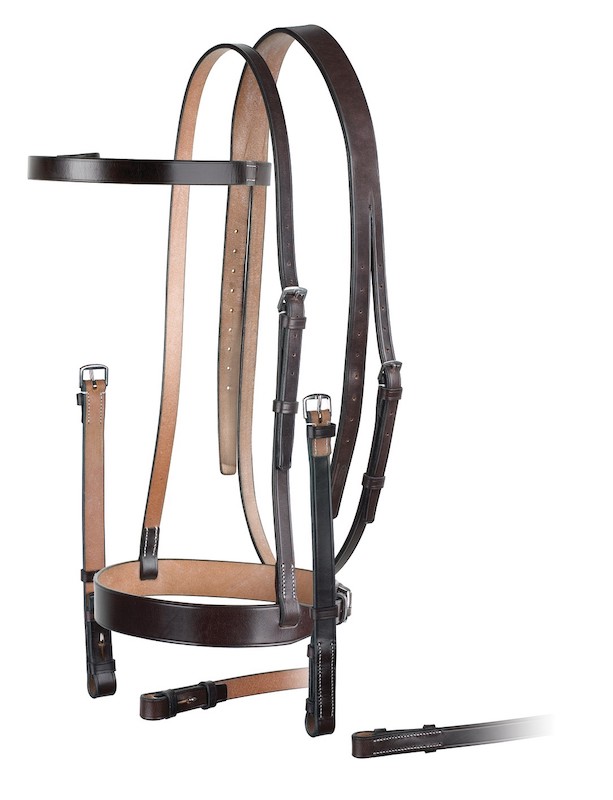
If you are interested in this option the Society of Master Saddlers can help as many of their members are craft bridle-makers who are amongst the best in the world.
Qualification
Last year the Society of Master Saddlers launched a new and forward thinking Bridle Fitting Qualification.
This new initiative aims to raise standards in the industry and enhance equine welfare.
The qualification, approved by City & Guilds, was developed over 18 months. At the centre of all the Society’s suite of qualifications, which are all approved by City & Guilds, is equine welfare which drives members forward to deliver the best saddlery services and goods in the world.
For further information about the Society of Master Saddlers visit www.mastersaddlers.co.uk or telephone 01449 711642. 
For more information visit www.mastersaddlers.co.uk or contact The Society of Master Saddlers on 01449 711642.
